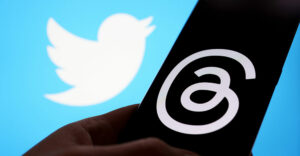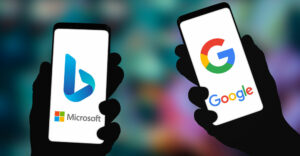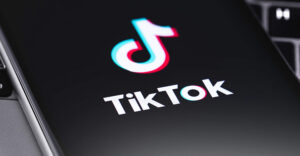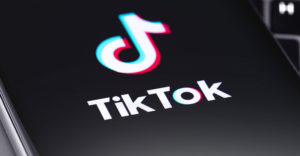In a drastic rebranding move, Elon Musk scrapped the perky blue bird that symbolized Twitter for more than a decade and replaced it with an enigmatic X.
Musk made the branding announcement early Sunday morning, and by the following day, the blue bird was gone, although everything else on the Twitter site appeared unchanged.
“Usually, people want to take the positive equity they have in a brand and bring it to the new brand. This move by Musk is what people do when they want to get rid of the old brand completely,” observed Patricia Hambrick, master lecturer in marketing at the Questrom School of Business at Boston University.
“This is much more drastic than a typical brand name change,” she told TechNewsWorld. “Brands do this when they have no positive equity left. You usually don’t see something this drastic.”
“From a business strategy standpoint, though, Musk needs to do something drastic to get what he bought back on track,” she added. “This could be something that could help him, or it could take him down, but it’s a pretty drastic move.”
Musk bought Twitter for US$44 billion in October 2022. Since then, he’s reduced the workforce at the company by 70%. However, that hasn’t stopped the company from losing almost two-thirds of its value with Musk at the helm, according to a report in The Guardian, nor has it halted an exodus of advertisers and users.
The Brands They Are A-Changin’
Companies typically change their branding to stay relevant in a dynamic market, attract new customers, and differentiate from competitors, explained Mark N. Vena, president and principal analyst at SmartTech Research in San Jose, Calif.
“Branding updates can also reflect a shift in company values, products, or target audience,” he told TechNewsWorld. “A fresh brand image can reinvigorate public interest and build stronger emotional connections with consumers, driving business growth.”
Companies also rebrand to get away from negative associations made with an old brand, or to position themselves for more changes, added Jessica Melugin, director of the Center for Technology and Innovation at the Competitive Enterprise Institute, a public policy organization in Washington, D.C.
“Since Musk has talked about the idea of a platform that does many things beyond just microblogging for some time, I’d guess it’s the latter that we’re seeing here,” she told TechNewsWorld.
Oftentimes rebranding goes hand-in-hand with business transformation, but that’s not the case yet with the X brand. “This rebranding is a little different because Twitter really hasn’t changed the product it’s offering,” asserted Mike Horning, an associate professor of multimedia journalism at Virginia Tech.
“That means Musk is going to have a small window to prove this is a new company with a new vision,” he told TechNewsWorld.
Benefits of Rebranding
Rebranding Twitter could help the company in a number of ways. It could, for example, make Twitter less politically polarizing, Melugin maintained.
“Some people who were happy with the platform before Musk’s purchase almost seem to take the changes he’s made personally,” she said. “This might be an opportunity to start fresh with both sides of the aisle. That idea could apply to advertisers, too.”
Greg Sterling, co-founder of Near Media, a news, commentary and analysis website, noted that rebranding could be valuable for Twitter’s future plans. “If Twitter is indeed pursuing its WeChat-like ‘super app’ vision, a new brand could better facilitate it,” he told TechNewsWorld.
There may be short-term benefits to rebranding, as well. “It’s going to generate attention from the media and put Musk’s company back in the spotlight,” Horning said.
“As we all know,” he added, “Twitter has had a pretty rough year with advertisers, and the brand has had some damage to it. Rebranding may be a way to attract advertising in the future.”
Greater Relevance
It may also be a way for Twitter to gain more relevance. “Twitter’s current branding has been around for over 15 years, and it’s starting to feel a bit dated,” Vena said. “A new logo and branding could help Twitter to feel more modern and relevant to a younger audience.”
Rebranding could also help Twitter differentiate itself from its competitors. “There are a number of other social media platforms out there, and Twitter needs to find a way to stand out from the crowd. A new logo and branding could help Twitter to do this,” Vena noted.
He pointed out that the fresh look of a new logo might also help attract new users. “That’s important, as Twitter’s user growth has been slowing down in recent years.,” he explained.
Another positive from rebranding cited by Vena is greater brand awareness. “That, too, could lead to more people using the platform, which would ultimately benefit Twitter’s bottom line,” he said.
Of course, there are potential pitfalls to Musk’s rebranding gambit, too.
“As a rule, people don’t like change,” Melugin explained. “That might work against the rebranding strategy — a ‘new Coke’ situation for the digital age or a re-do of Facebook’s shift to Meta.”
“That’s a risk,” she continued, “but Musk is a true entrepreneur in the sense that he doesn’t mind trying, failing, and being better off for what he learns in the process.”
“If he’s not afraid to blow up rockets, he’s not afraid to change a name,” she added.
X-Rated X-Brand
Sterling contends that there are more disadvantages than advantages to the name change. “The X brand is harsh and not brand-friendly. It’s not particularly consumer-friendly either,” he said.
“It also walks away from whatever remaining goodwill and brand equity Twitter had,” he added.
Could the X brand be confused with adult content?
“Given the time I take every morning to block or report posts that are graphic and inappropriate, some might say regardless of branding, Twitter already is an X-rated site now that certain content and quality controls have been abandoned,” observed Liz Miller, vice president and a principal analyst with Constellation Research, a technology research and advisory firm, in Cupertino, Calif.
“The real risk this move takes is further alienating advertisers and users with a lack of substance and real business direction,” she told TechNewsWorld. “Shouting into the ether that you are a public town square and that this town square is awesome is very different than building a trusted brand that people want to invest in and continuously trust.”
“Changing Twitter’s name to X was stupid on Musk’s part, driven by ego and from being disconnected from his customers,” added Dan Kennedy, a professor of journalism at Northeastern University.
“When Google and Facebook changed their corporate names to Alphabet and Meta, they still kept the branding of their signature products,” he told TechNewsWorld. “Twitter is one of the most recognizable names in technology. Musk may have trashed the brand, but entering the equivalent of the witness protection program isn’t going to help.”























































Social Media
See all Social Media